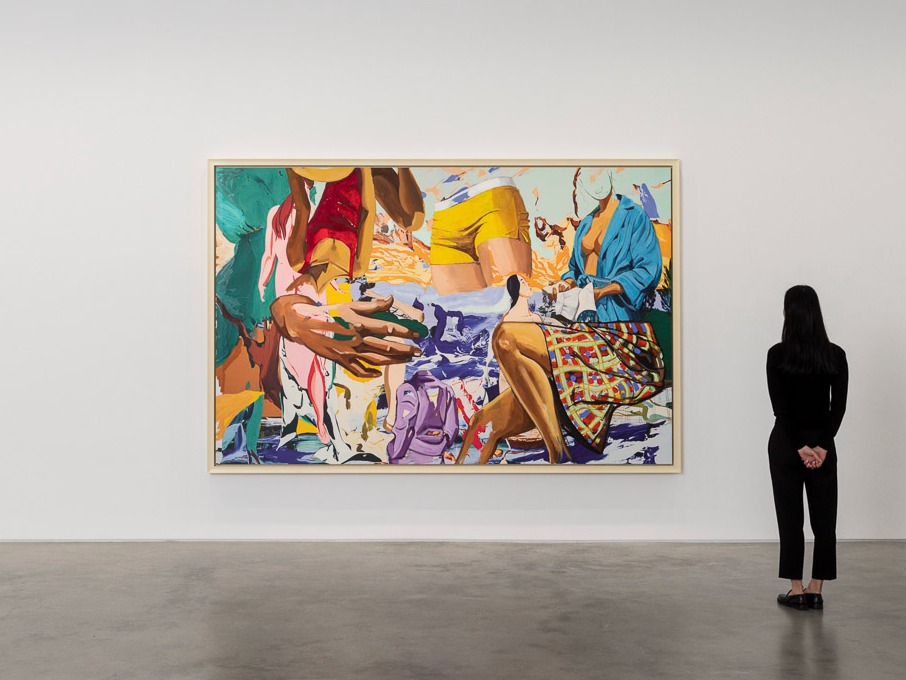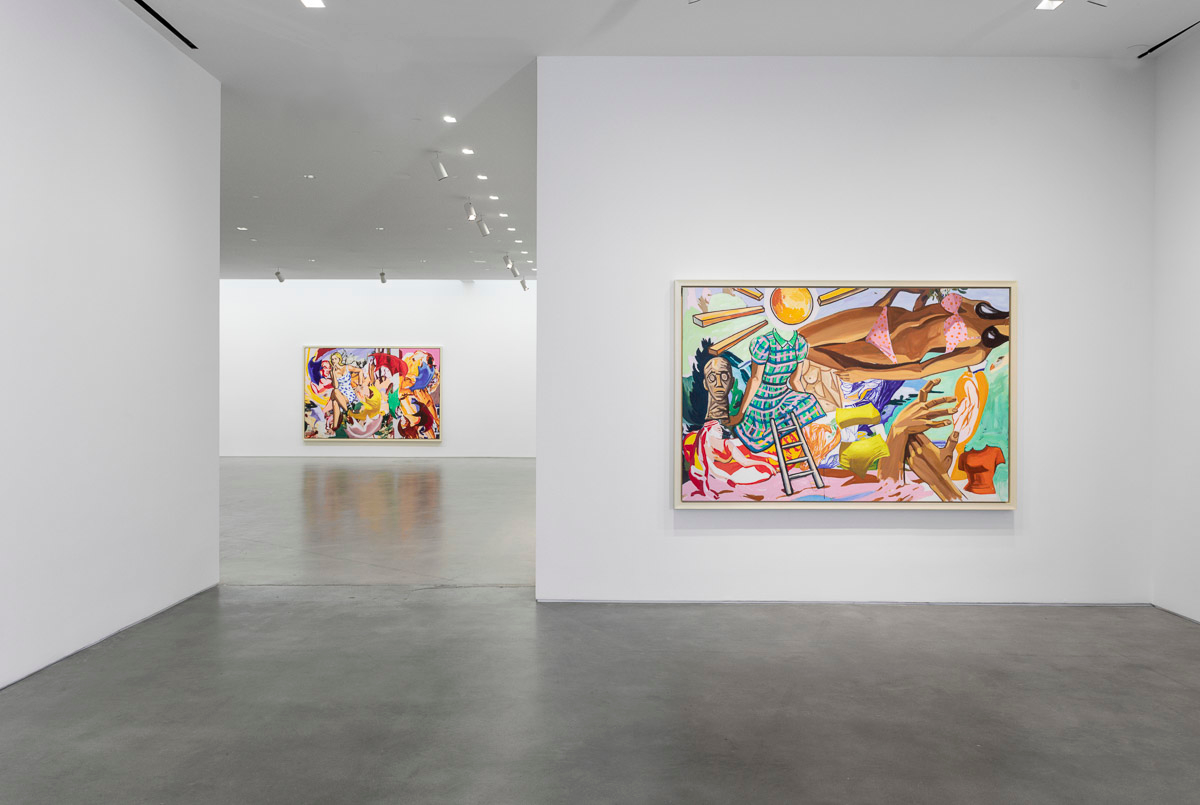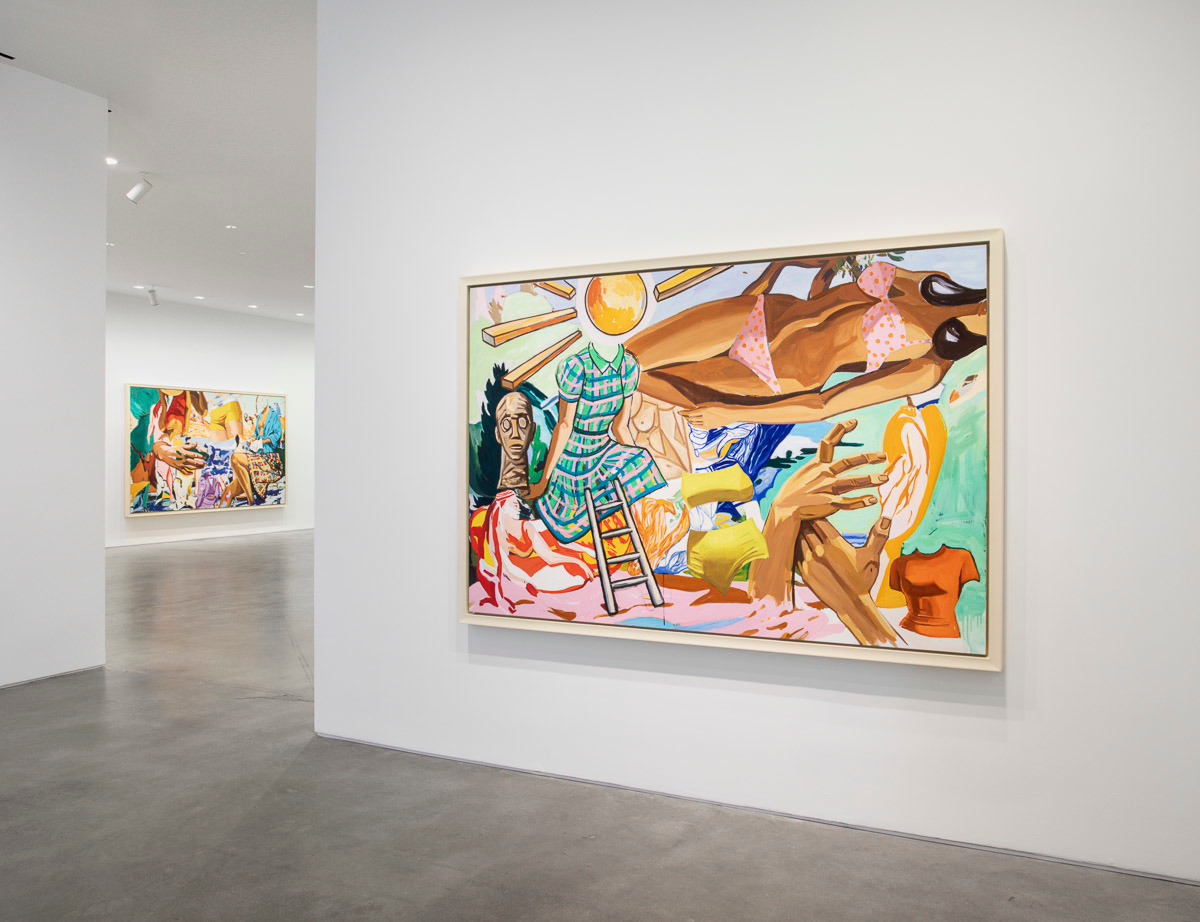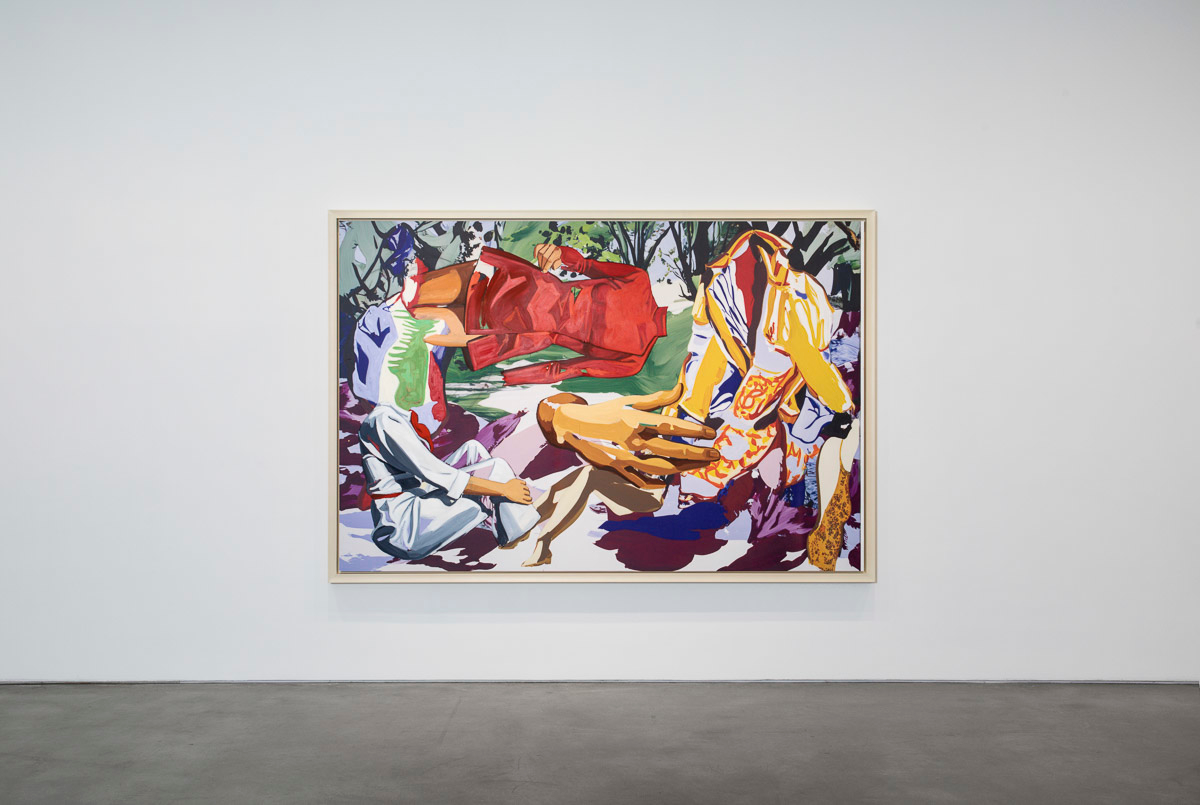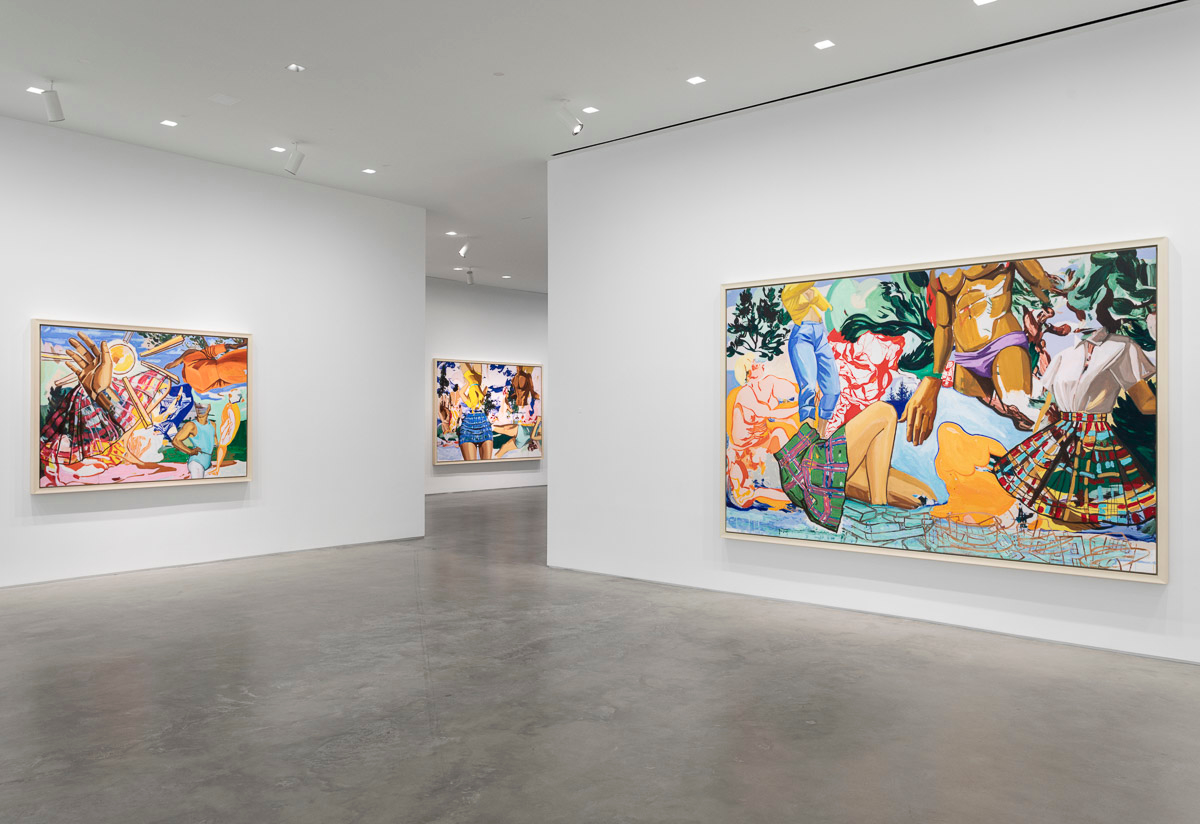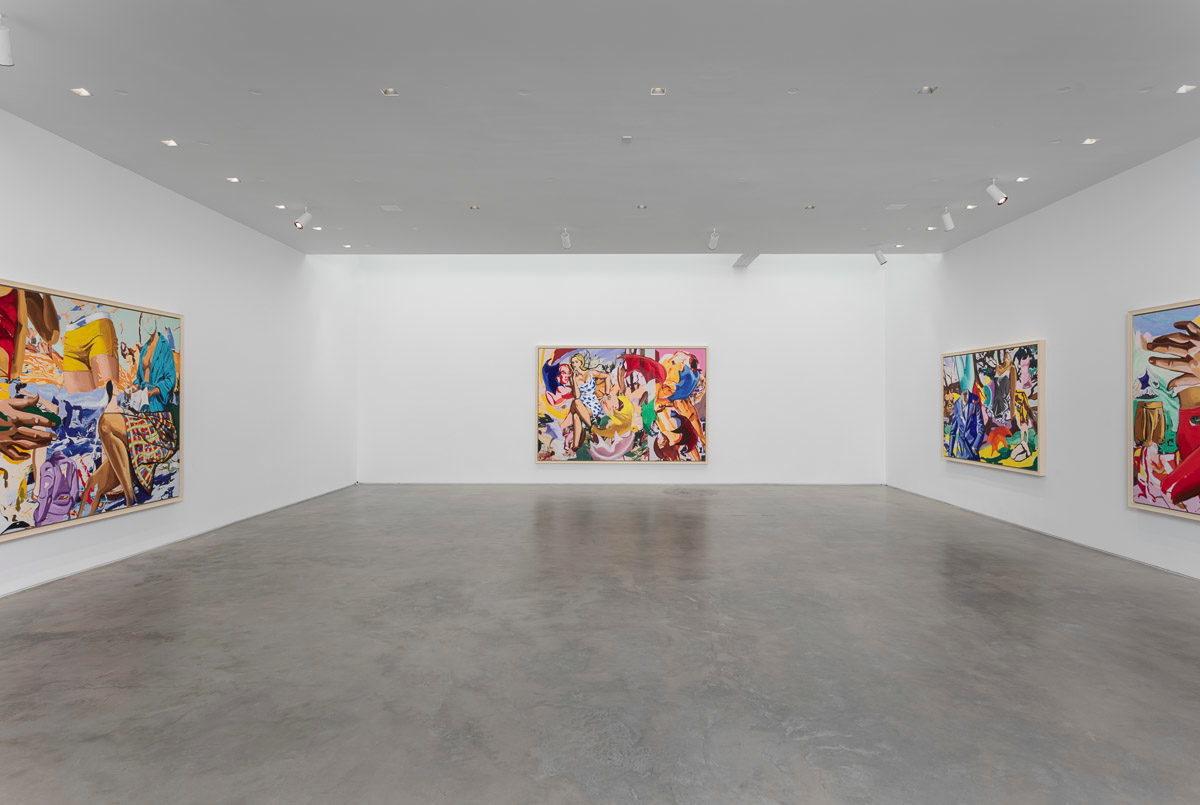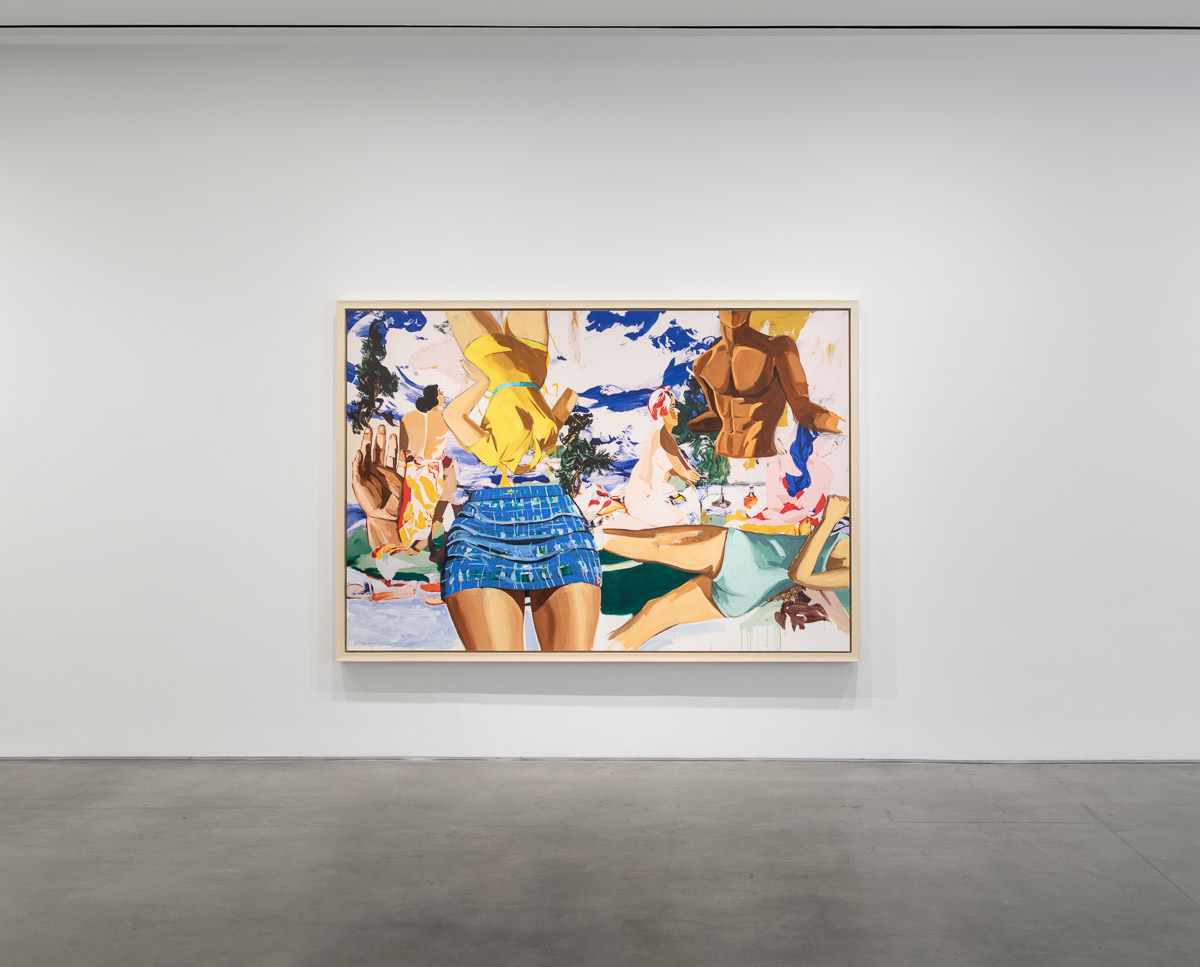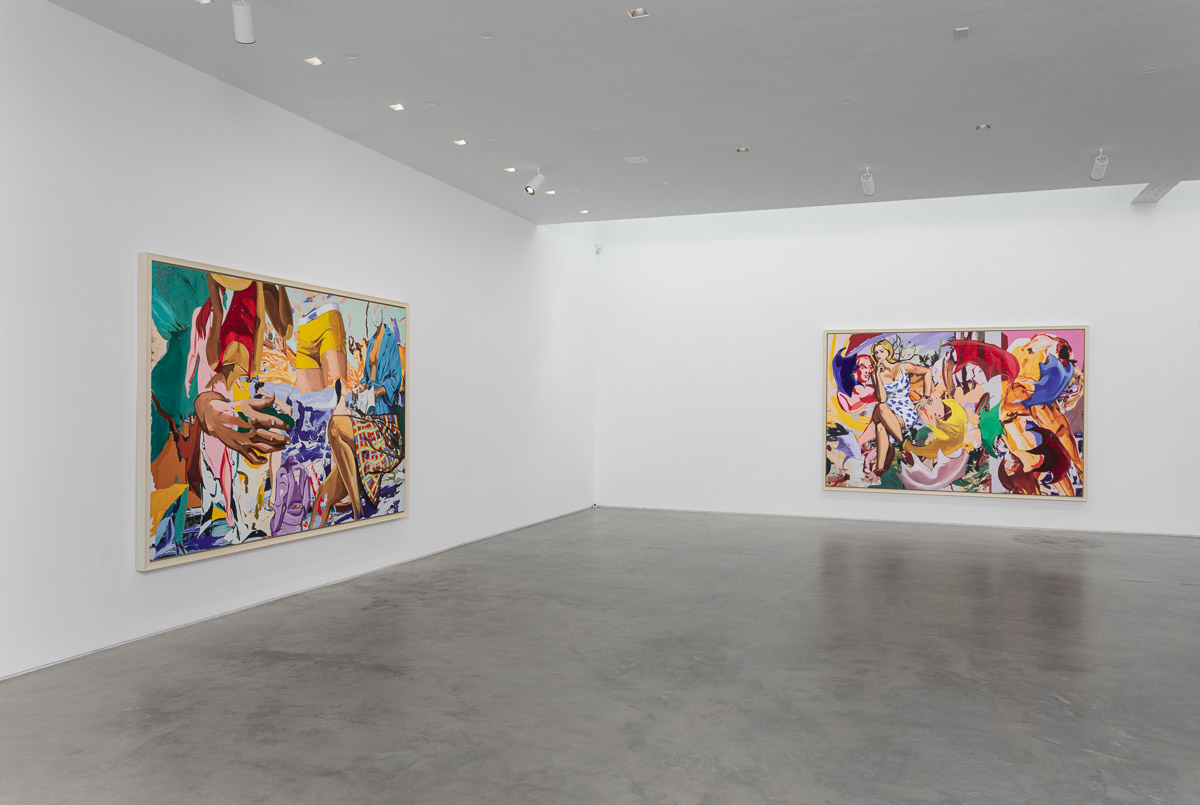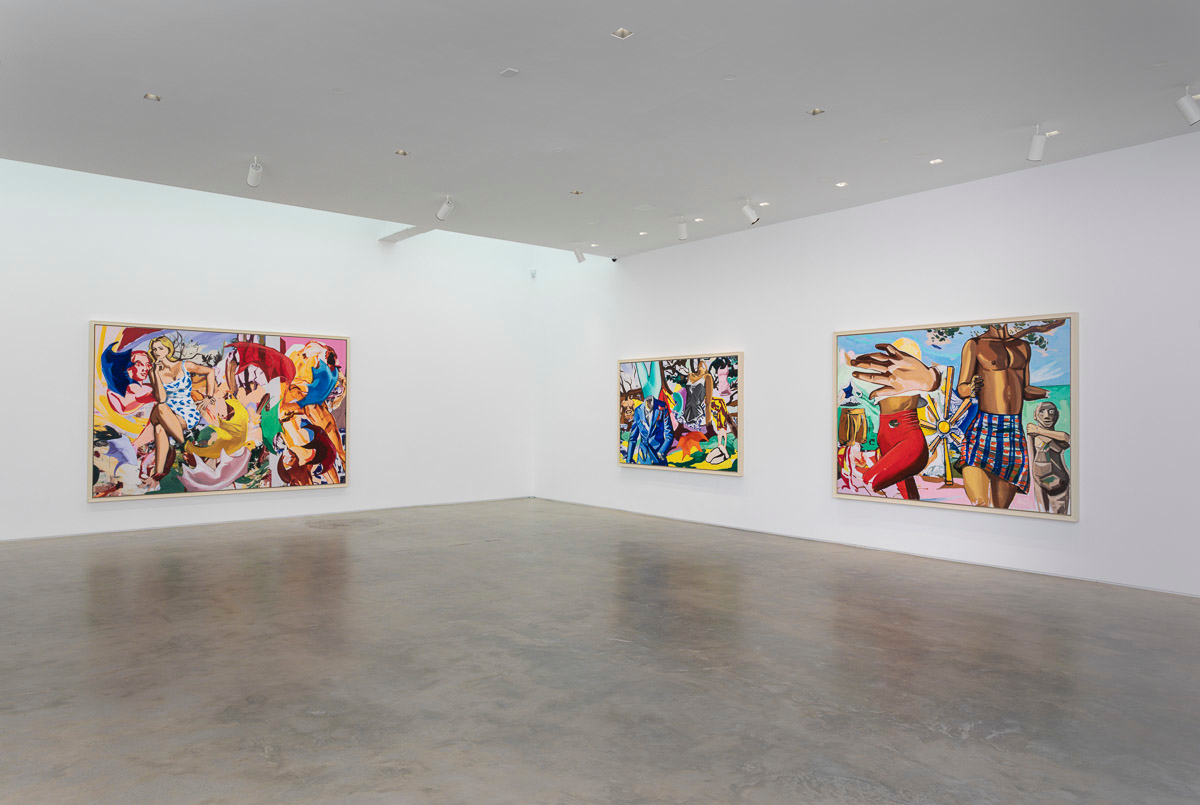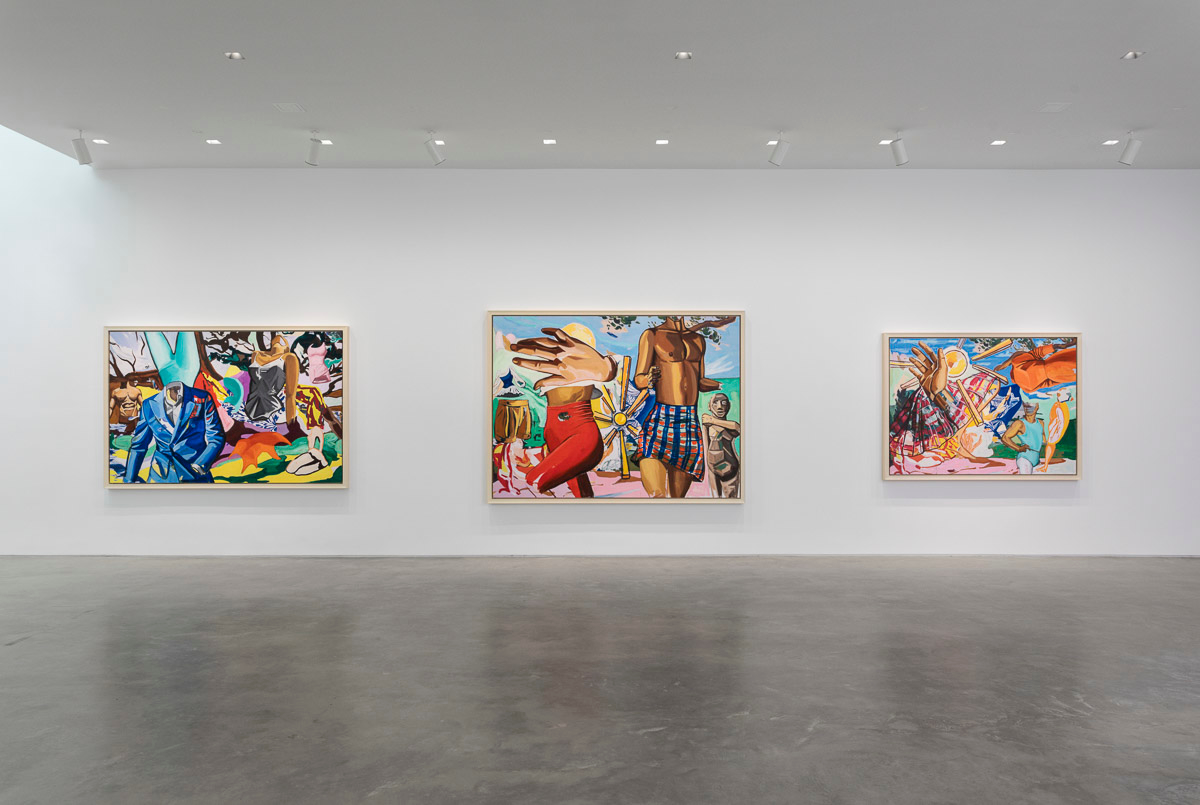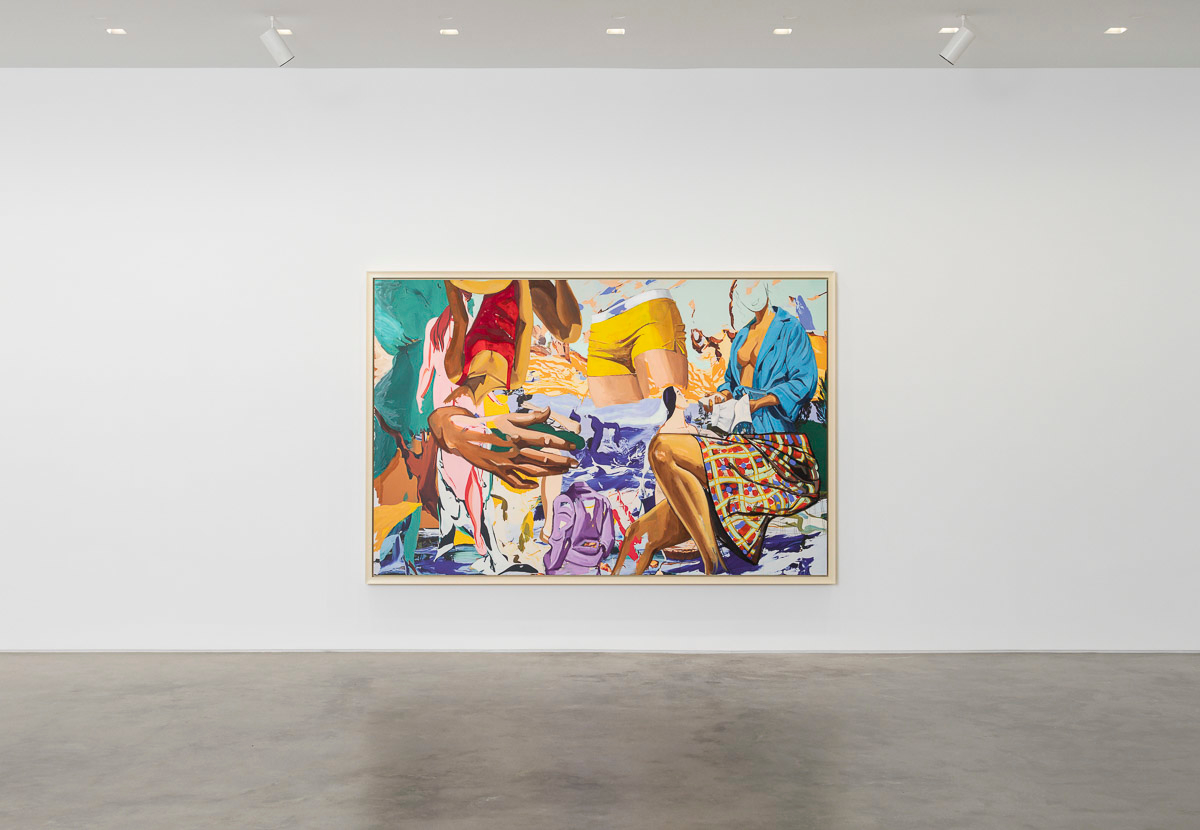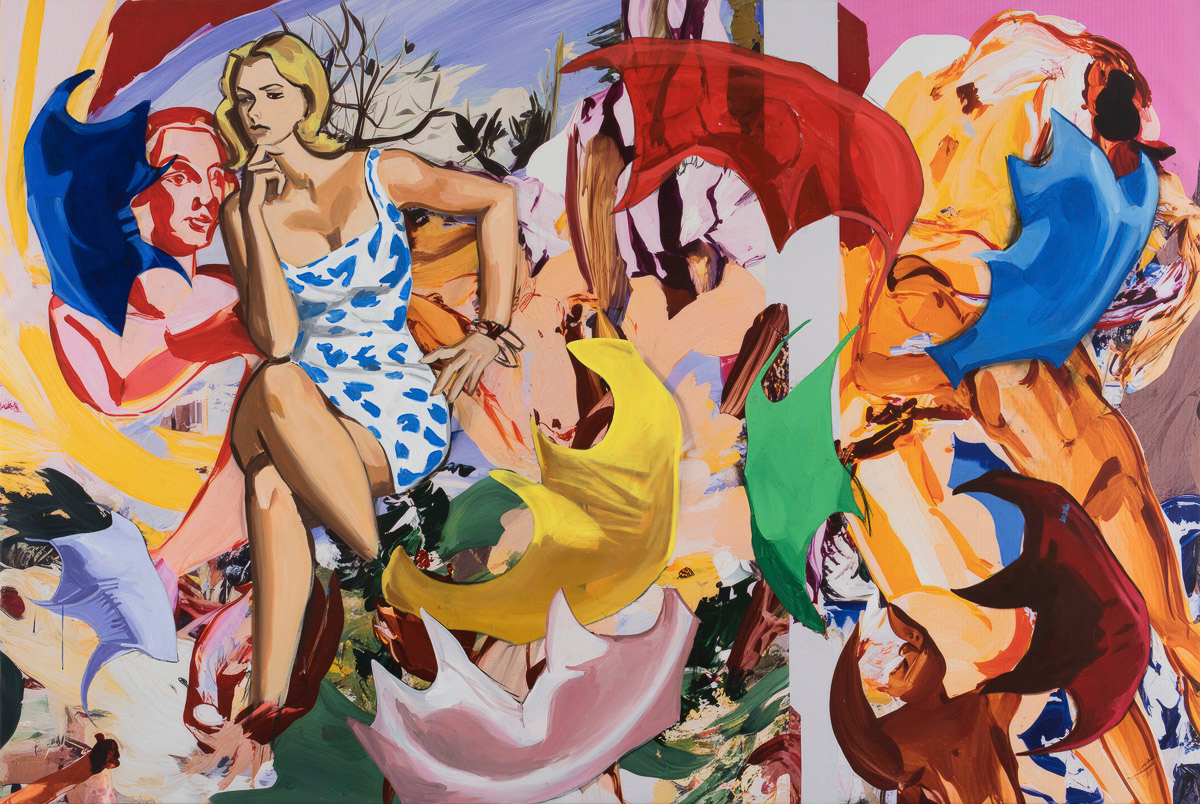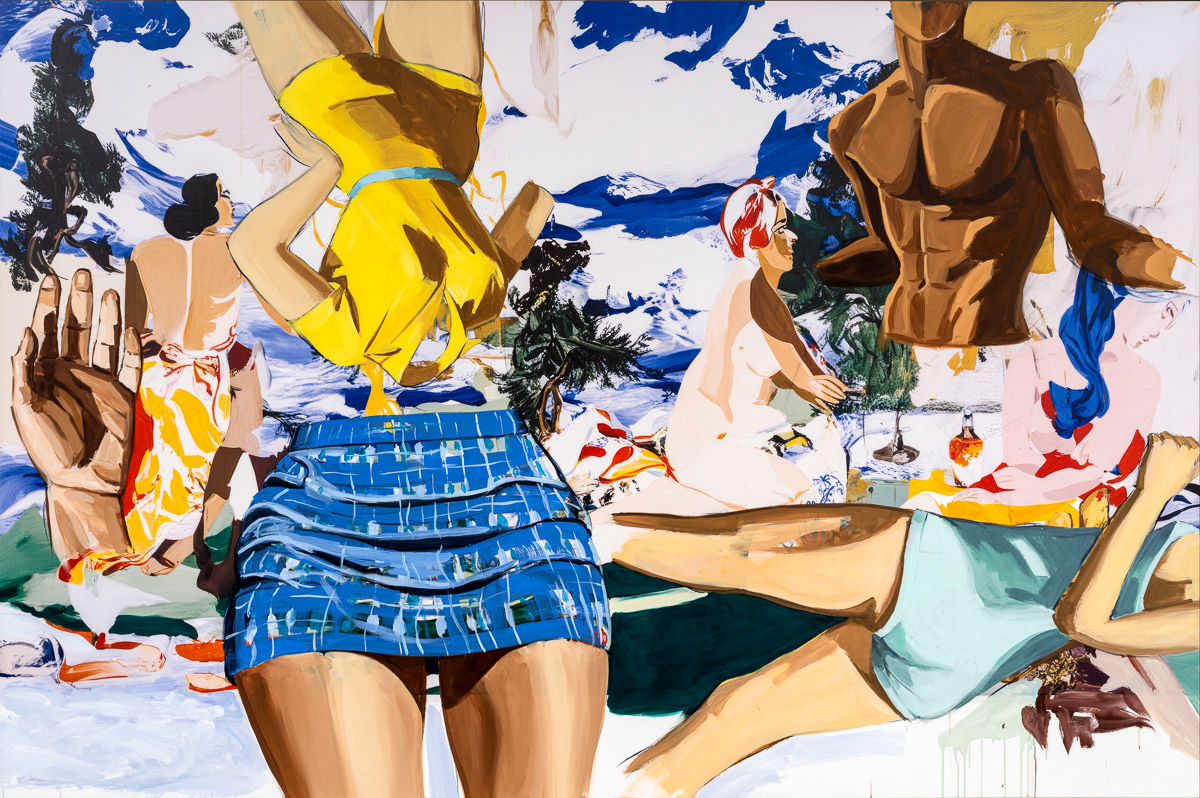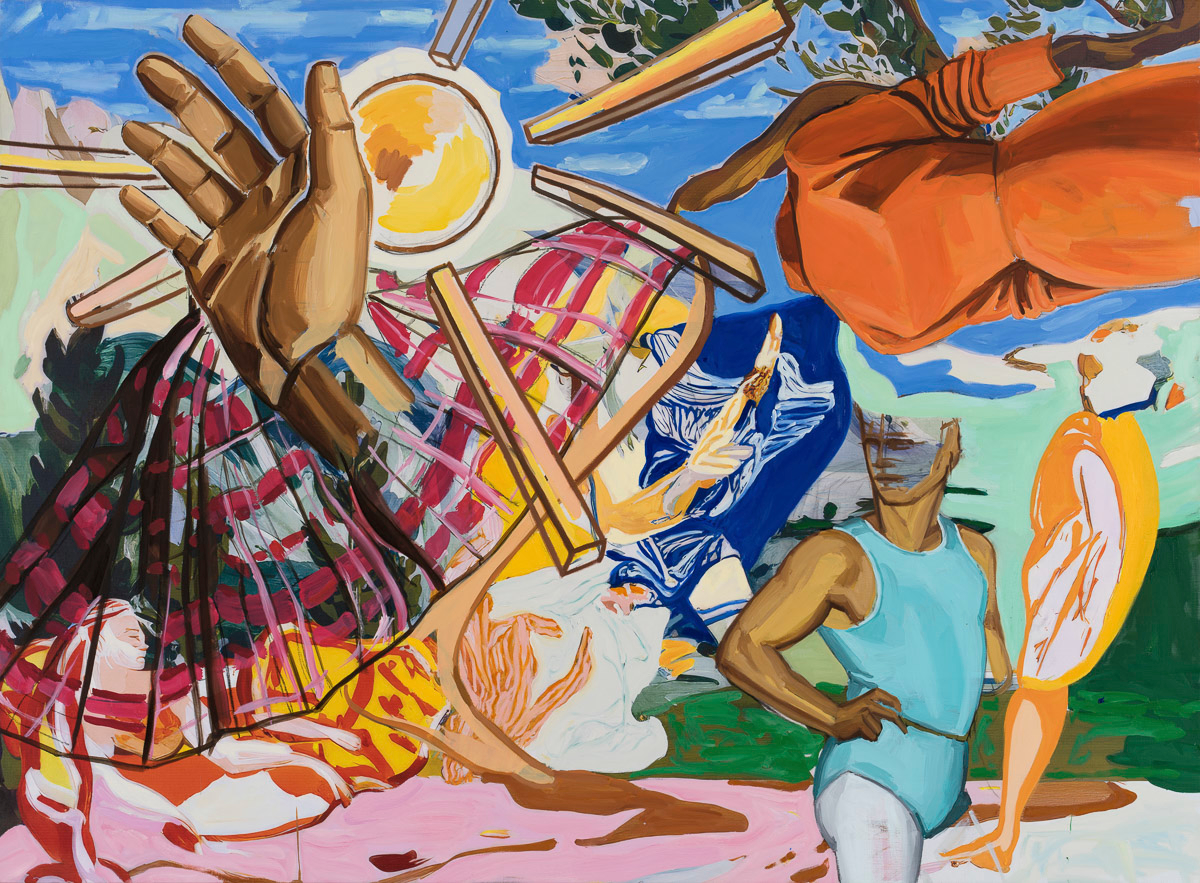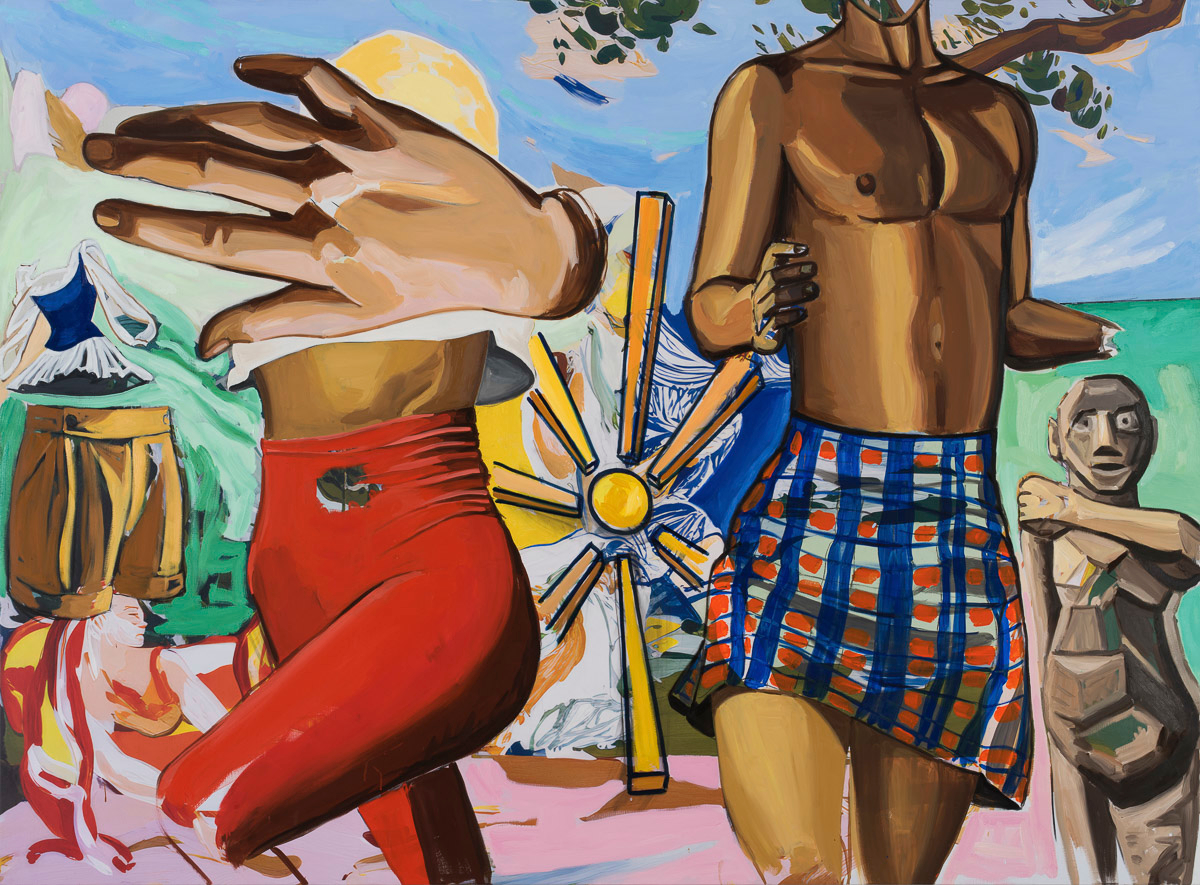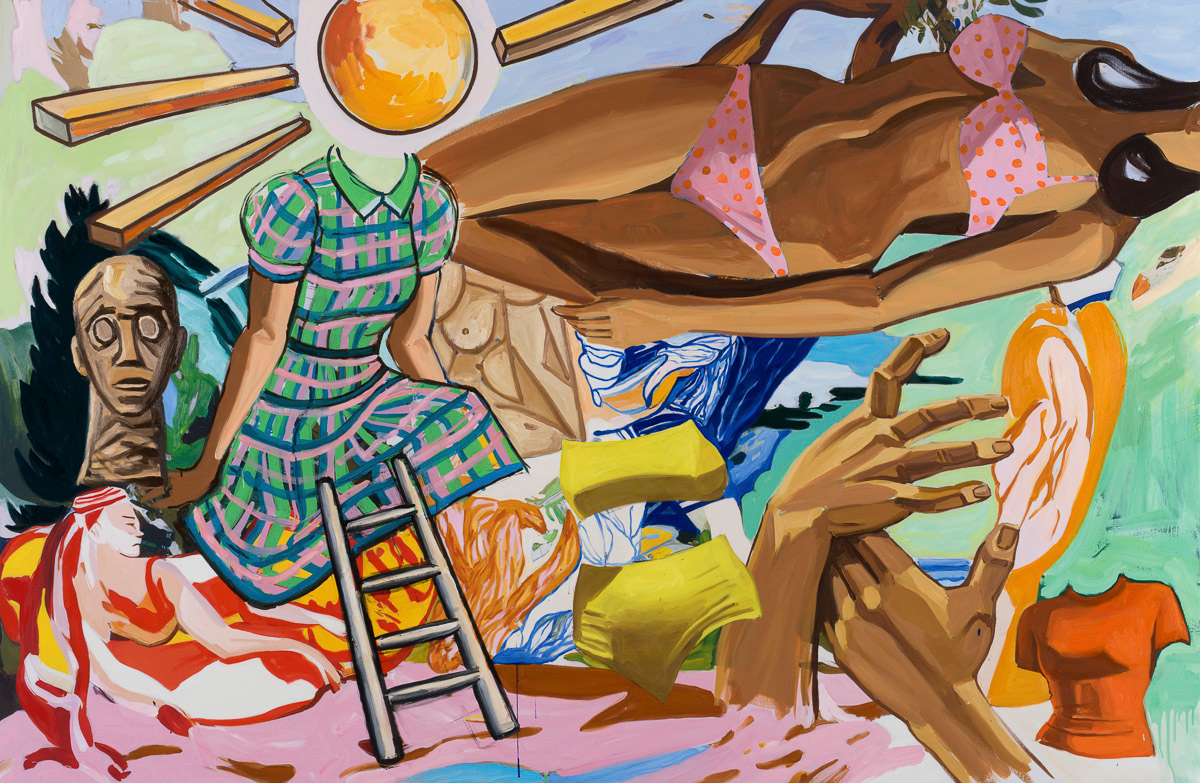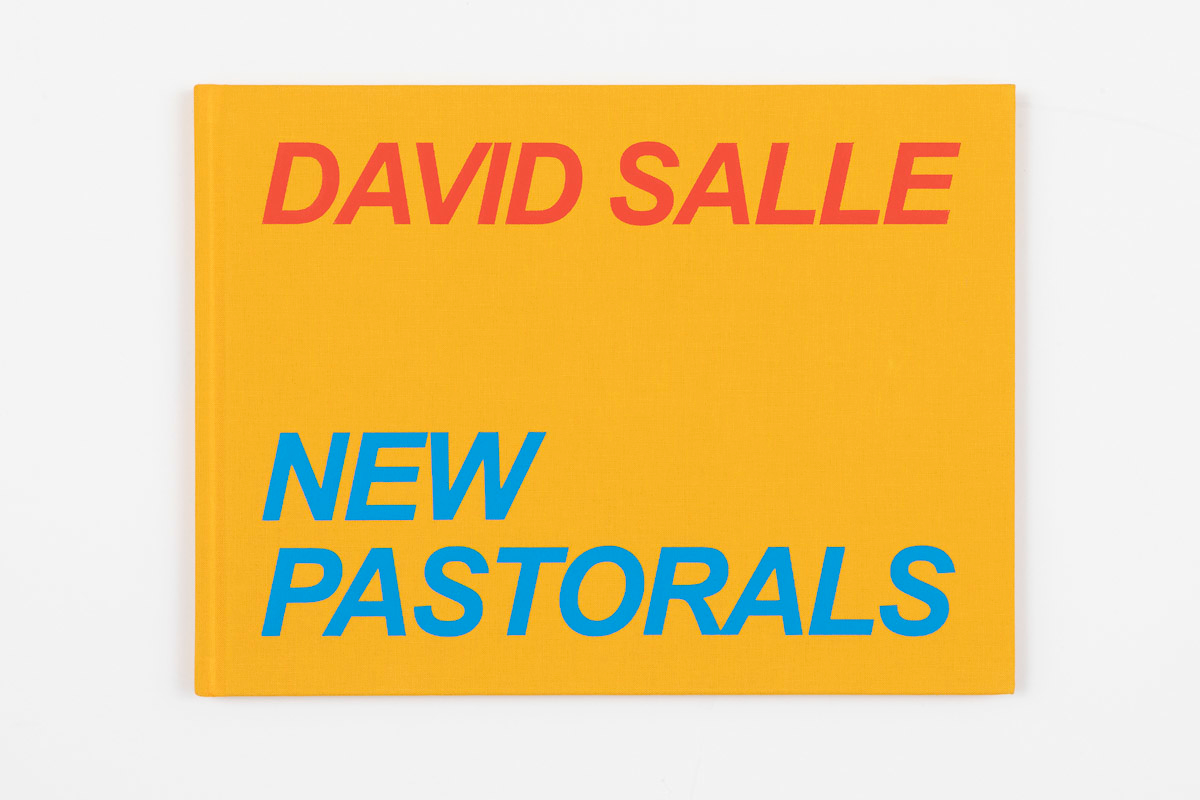New Pastorals
September 26 — November 2, 2024
New York: 24th Street
It should come as no surprise that David Salle would partner with AI to create a new series of dynamically constructed paintings, the New Pastorals (2024–). This collaborative pivot marks an inflection point in a career spent scanning the image banks of popular culture and art history for striking and resonant forms, which he amalgamated into searing, disjunctive compositions. Ever attuned to developments in digital art, Salle saw AI as a readymade tool for reaching beyond what he already knew about the process of painting in his vast experience as an image maker. He also knew, as an incisive critic of the medium, that AI was not equipped to generate meaningful marks alone as it did not understand emphasis, contours, or edges. So Salle set out, in partnership with engineer Grant Davis, to construct a neural network that would be nuanced enough to tangle with his prodigious formal skills and produce the kind of internal scaffolding that makes a great painting great. At first, he educated the AI—which is activated by visual, not textual, prompts—with master works by the pantheon of artists he admires (de Chirico, Hopper, et al), enhancing the process with a dose of Arthur Dove, whose fluid passages of black pigment allowed the machine to dream in depth and dimensionality. But Salle was less interested in the appropriation of past styles as a conceptual conceit than he was in a muscular interaction with algorithmic form- making. He thus developed a new training model, one focused exclusively on his own previous work, namely the series of Pastorals from the late 1990s and early 2000s. These canvases, according to the artist, provided the perfect range of data to deconstruct and reassemble: their compositions are divided into discrete interlocking shapes; there are several distinct color palettes operating simultaneously; and they are suffused with a myriad of detail. What resulted, when the machine was torqued by a lever that determines degrees of similarity and dissimilarity, were irreal mountain landscapes populated by fragmenting bodies, vestiges of bathers and shepherds succumbing to the determinant forces of code.

Installation
Work
About
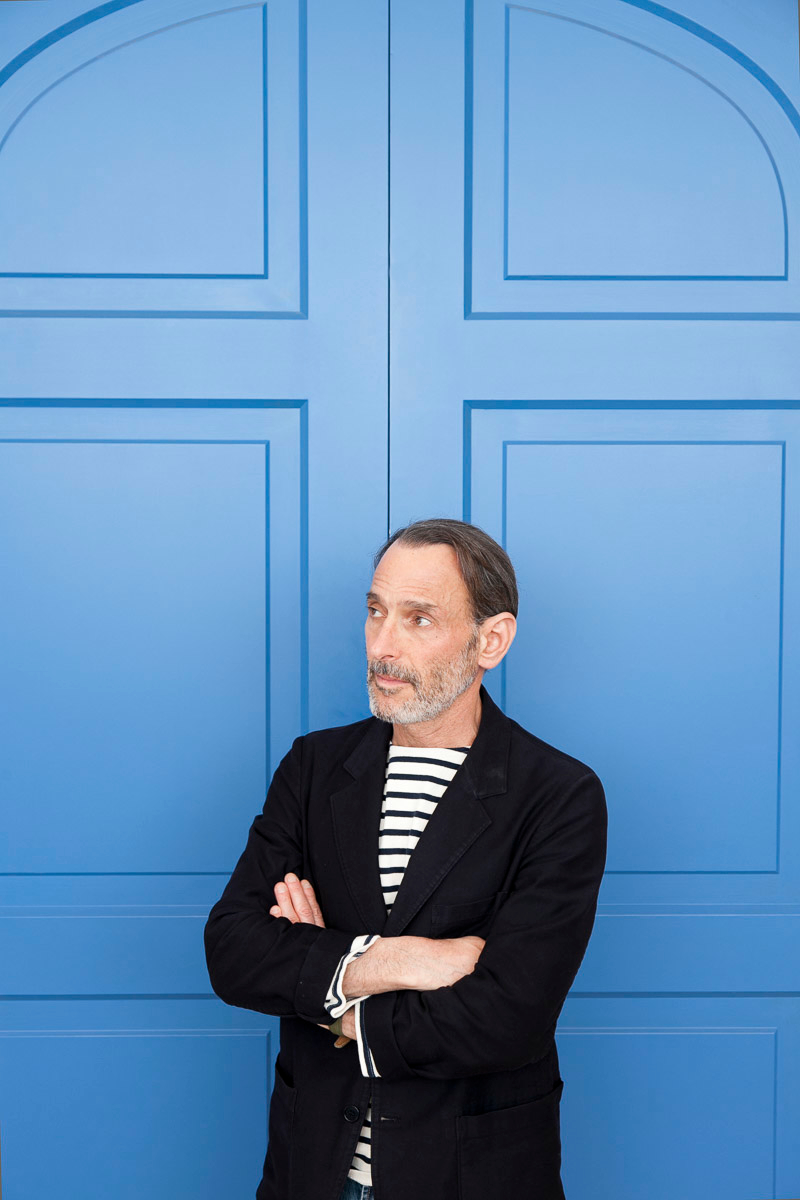
Photo by Robert Wright
David Salle (b. 1952, Norman, Oklahoma) lives and works in Brooklyn, New York. Salle attended the California Institute of Arts (CalArts), Los Angeles, receiving a BFA in 1973 followed by an MA in 1975. Since the 1980s, Salle has received international recognition, with solo exhibitions at Museum Boijmans Van Beuningen, Rotterdam; the Whitney Museum of American Art, New York; Spiral Hall Museum, Tokyo; Tel Aviv Museum of Art; and the Museum of Contemporary Art, Los Angeles. His 1999 retrospective was held at the Stedelijk Museum, Amsterdam and traveled to the Museum Moderner Kunst Stiftung Ludwig, Vienna; Castello di Rivoli Museo d'Arte Contemporanea, Turin, Italy; and Guggenheim Bilbao, Spain. Salle’s most recent survey exhibition, was held at the Brant Foundation in Greenwich, Connecticut (2021). Salle’s work is held in international public collections including the Art Institute of Chicago, Illinois; The Broad, Los Angeles; Centre Georges Pompidou, Paris; Dallas Museum of Art, Texas; Los Angeles County Museum of Art (LACMA), California; Louisiana Museum of Modern Art, Humblebæk, Denmark; Metropolitan Museum of Art, New York; Museo Nacional Centro de Arte Reina Sofia, Madrid; Museum of Contemporary Art, Chicago; Museum of Contemporary Art Los Angeles; The Museum of Modern Art, New York; National Gallery of Australia, Canberra, Australia; National Gallery of Art, Washington, D.C.; San Francisco Museum of Modern Art, San Francisco; Tate Modern, London; Solomon R, Guggenheim Museum, New York; and Whitney Museum of American Art, New York, among others. Salle is also a prolific writer and critic whose essays and interviews have been published in Artforum, Art in America, Modern Painters, and The Paris Review, as well as in numerous exhibition catalogs and anthologies. He is a frequent contributor to The New York Review of Books and his collection of critical essays, How To See, was published by W. W. Norton in 2016.
More on David Salle
